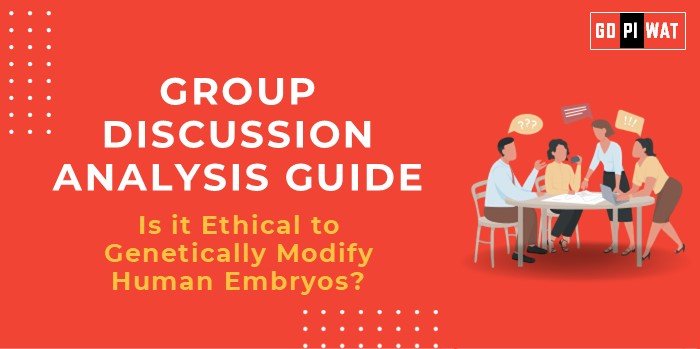📋 GD Analysis Guide: Is it Ethical to Genetically Modify Human Embryos?
🌐 Introduction to the Topic
Opening Context: Genetic modification of human embryos has ignited global debates, balancing the promise of eradicating hereditary diseases against potential ethical concerns. With advancements in CRISPR technology, this topic resonates across scientific, moral, and policy domains.
Topic Background: Genetic editing tools like CRISPR-Cas9, introduced in 2012, allow precise modifications to DNA. In 2018, the birth of genetically edited twins in China brought this issue into sharp focus, raising questions about ethics, safety, and regulation.
📊 Quick Facts and Key Statistics
- 🔬 CRISPR Breakthrough (2012): Revolutionized genetic editing with unprecedented precision.
- 🍼 2018 Case: Genetically edited twins in China led to a global outcry and regulatory crackdowns.
- 📜 WHO Guidelines (2021): Established a framework for human genome editing.
- 📊 Public Opinion: 68% of Americans oppose embryo editing for non-therapeutic purposes (Pew Research Center, 2022).
🎯 Stakeholders and Their Roles
- 🧑🔬 Scientists and Researchers: Drive technological innovation and advocate for ethical boundaries.
- 🏛️ Governments and Regulatory Bodies: Frame and enforce guidelines to prevent misuse.
- 👨👩👧👦 Parents and Families: Potential beneficiaries or critics, depending on societal norms and beliefs.
- 🧠 Bioethics Committees: Balance scientific advancements with ethical considerations.
🏆 Achievements and Challenges
✨ Achievements:
- 🧬 Eradication of Diseases: Preventing genetic conditions like cystic fibrosis.
- 🔍 Advancements in Research: Insights into human biology and potential cures.
- 📢 Increased Awareness: Promoting global dialogue on ethics and safety.
⚠️ Challenges:
- 🌀 Moral Dilemmas: Concerns over ‘designer babies’ and societal inequality.
- ⚙️ Safety Risks: Unpredictable long-term genetic impacts.
- 🌍 Global Regulation: Diverging laws and enforcement mechanisms.
🌍 Global Comparisons
- 🇨🇳 China: Pioneer but faced backlash due to ethical breaches.
- 🇬🇧 UK: Permits research with strict guidelines under the HFEA (Human Fertilisation and Embryology Authority).
Case Studies: He Jiankui Experiment (China): Highlighted ethical lapses and regulatory gaps.
🗣️ Structured Arguments for Discussion
✔️ Supporting Stance:
“Genetically modifying embryos can eliminate hereditary diseases, revolutionizing medicine and saving lives.”
❌ Opposing Stance:
“This technology opens Pandora’s box, leading to ethical concerns, inequality, and unforeseen consequences.”
⚖️ Balanced Perspective:
“While the medical benefits are undeniable, strict regulation is crucial to prevent misuse and ethical violations.”
🧠 Effective Discussion Approaches
💡 Opening Approaches:
- 📊 Statistical Impact: “68% of Americans oppose non-therapeutic genetic editing, yet the potential to cure diseases cannot be overlooked.”
- 📜 Historical Context: “Since the advent of CRISPR, the line between medical innovation and ethics has blurred.”
🤔 Counter-Argument Handling:
- Rebuttal: “While concerns about designer babies are valid, robust legal frameworks can ensure ethical applications.”
🔍 Strategic Analysis of Strengths and Weaknesses
- ✔️ Strengths: Advances in medical science, potential to eradicate diseases.
- ❌ Weaknesses: Ethical dilemmas, unequal access.
- 🌟 Opportunities: Global collaboration, disease prevention.
- ⚠️ Threats: Biosecurity risks, public backlash.
📚 Connecting with B-School Applications
- 🏥 Real-World Applications: Use in healthcare management and policy formulation.
- ❓ Sample Interview Questions:
- “How should governments regulate genetic modification technologies?”
- “What ethical boundaries should guide scientific advancements?”
- 🎓 Insights for B-School Students: Explore the intersection of technology, ethics, and policy for projects or internships.


